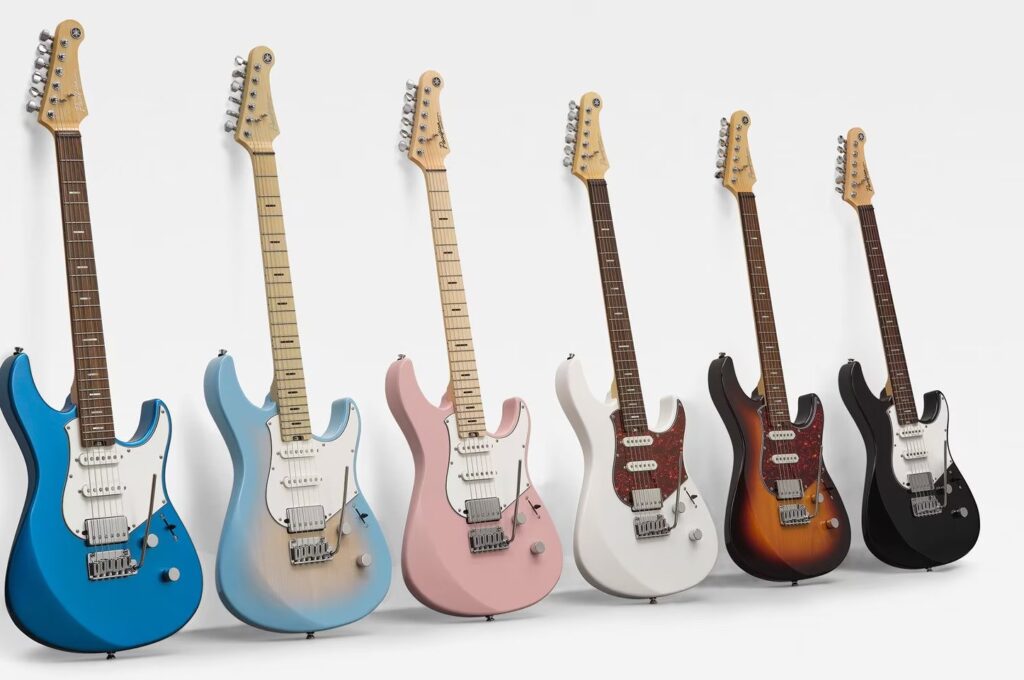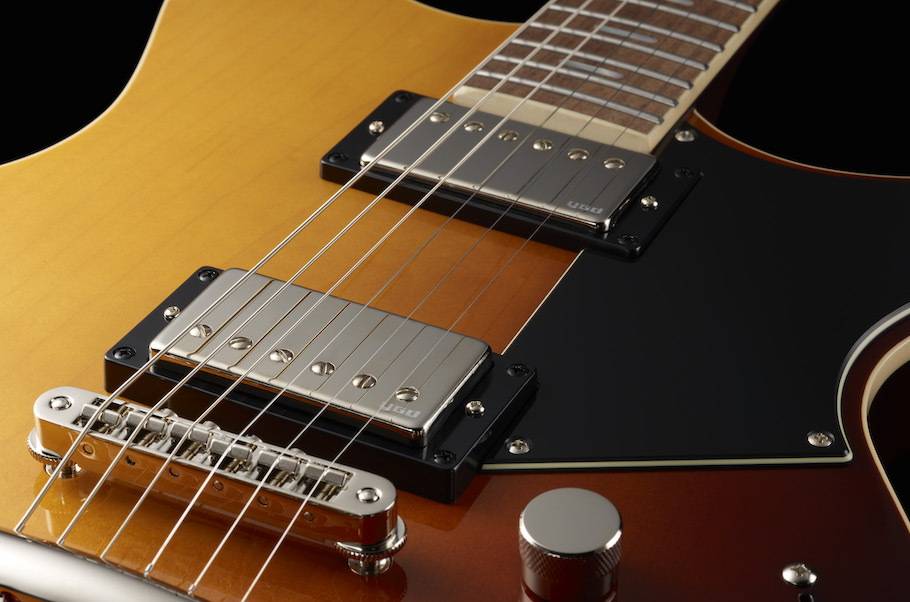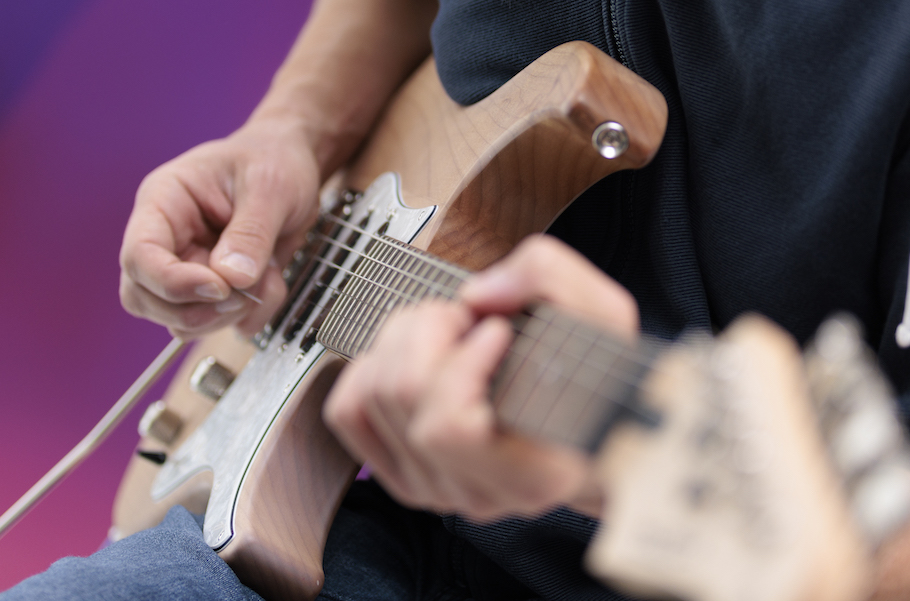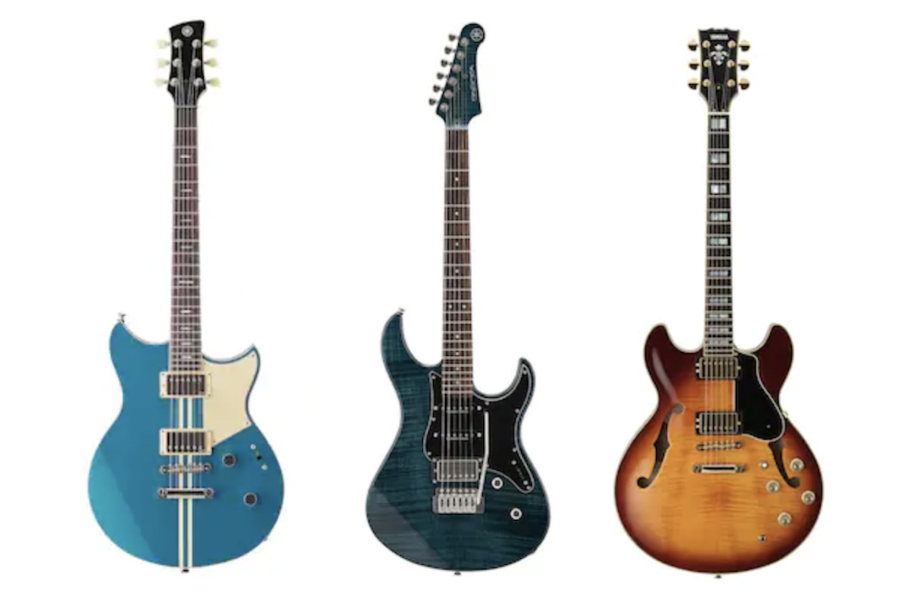Choosing the Right Electric Guitar: Hollow-Body vs. Solid-Body
Which design is right for you?
For at least the past 70 years, conventional wisdom about electric guitar body types has been as follows: If you’re into jazz or blues, get yourself a hollow-body; if you wanna rock, go for a solid-body.
There’s a lot of historical precedent for this. Jazz and blues players have indeed tended to gravitate toward hollow-body guitars, especially those instruments that replicate the classic archtop designs guitarists used before the age of amplification. Meanwhile, rock enthusiasts often prefer instruments that don’t look like archtops. When solid-body guitars were invented in the middle of the 20th century, part of what made them so revolutionary was that manufacturers no longer had to be concerned about an instrument’s acoustic properties — which meant that they could carve it into any crazy shape they wanted … and rock players love crazy shapes.
Nonetheless, lots of rock guitarists have favored hollow-bodies, including legendary names like John Lennon and that absolute rock ’n’ roll archetype Chuck Berry. And if anyone still thinks you can’t play jazz or blues on a solid-body, they obviously haven’t heard the work of Les Paul, Allan Holdsworth, Duane Allman, Stevie Ray Vaughan and countless others.
The bottom line is that the style of music you want to play shouldn’t be a major factor when you’re trying to decide between a hollow-body and a solid-body electric guitar. Here are a few of the pros and cons you should consider.
Hollow-Body Pros and Cons
Even before you plug a hollow-body electric guitar into an amplifier, at least a couple of the instrument’s greatest virtues will be immediately evident. First, because its body is hollow, it usually weighs considerably less than a solid-body — something to think about if you’re planning to spend a lot of time standing up with the guitar strapped to you. Second, because it has a resonating chamber similar to that of an acoustic guitar, you can hear it better when playing unplugged — an important factor if, say, you’re living in an apartment building with neighbors who go into conniptions when you practice at stage volume.
Once you’ve plugged in, you’ll find that a hollow-body naturally delivers a warm, rich tonality. That’s because the resonance of the body emphasizes low-mid and bass frequencies. That said, hollow-bodies are capable of a wide variety of tones; if you want to get trebly, start tweaking the instrument’s (or amp’s) knobs, and go for it.
Another way in which hollow-body guitars are similar to acoustic guitars is that they usually don’t summon up a great deal of sustain. That’s not exactly a surprise — a hollow body just won’t vibrate or interact with pickups the same way a solid one will — but it does mean that if you’re partial to long drawn-out notes, a hollow-body may not be for you.
The main downside of hollow-body guitars has always been that they’re prone to feeding back if you turn them up too loud. There are three principal ways of addressing this problem: 1) Don’t turn your amp up so much (not always practical); 2) Go old-school like B.B. King used to do and shove a sock inside the body (more or less effective in a pinch, but not recommended for daily practice); and 3) Make the body shallower by putting a solid block of wood in its center to combat unwanted resonance.
Many manufacturers have opted for the latter choice over the years, leading to the creation of what could, strictly speaking, be called a separate category, but is usually thought of as a subcategory: semi-hollow electric guitars. The Yamaha SA2200 is an excellent example; its laminated sycamore body has the recognizable contours of an archtop guitar, complete with double f-holes for better acoustic projection, but the center block inside the body — made of soft maple — helps keep feedback at bay, making it a far less fraught matter when you need to crank it up (though please protect your ears while doing so!).

Solid-Body Pros and Cons
Make no mistake, you’ll get feedback if you turn a solid-body electric up loud enough too, but you can control it better, and even get it to produce predictable tones — as, for example, Jimi Hendrix did on “Machine Gun,” a performance that would have been just about inconceivable on a hollow-body instrument. Why? Because the greater mass and diminished acoustic resonance of a solid-body emphasizes fewer frequencies, allowing the guitar’s pickups to focus on less sonic information.
This also helps explain why solid-body guitars tend to have better sustain than hollow-bodies. The lack of a resonant chamber means that when you pick a note, secondary and tertiary harmonics fade away quickly while the primary ones continue to vibrate. Just how much more sustain you can get from a solid-body depends on other factors, principally the type(s) of woods used and the type(s) of pickups in the guitar.
On the whole, a trebly tone sounds more pleasant on a solid-body than on a hollow-body. Likewise, solid-bodies sometimes strain to produce the kind of rich, warm tones that come easily to a hollow-body. But these are sweeping generalizations, and either type of guitar can surprise with its tonal versatility.
As discussed previously, weight can be an issue with solid-body guitars. Many players, of course, prefer the feel of heavier guitars — though that probably doesn’t include guitarists with neck, shoulder or back problems. But electric guitars don’t need to weigh a ton to sound good or sustain well. For proof of that, just grab any model in the Yamaha Pacifica or REVSTAR lines. Their bodies (mostly a maple/alder combination for Pacificas, primarily maple and mahogany for REVSTARs) are cut for comfort, while still providing all the benefits of a solid-body.

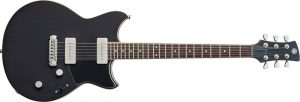
In the end, choosing between a solid-body and a hollow-body electric guitar comes down to personal preference, as it should. When making that choice, you’ll need to think about what you like most in a guitar in terms of sound, feel and look. But don’t let anyone tell you that you need a certain type of electric guitar to play a certain type of music. Guitars are willing accomplices in music-making; what you create with them is up to you.
Click here for more information about Yamaha electric guitars.
Click here for more information about the Yamaha SA2200.
Click here for more information about Yamaha Pacifica guitars.
Click here for more information about Yamaha REVSTAR guitars.











